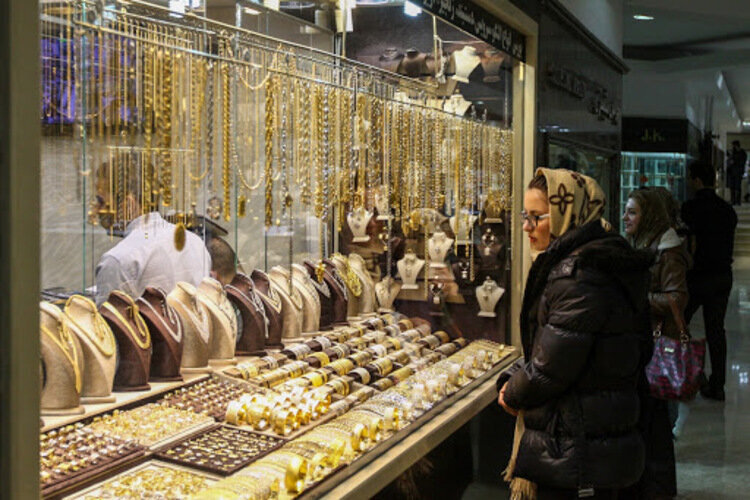Yazd to launch ‘bazaar museum’ of gold

TEHRAN – Tourism directorate of Yazd has announced an initiative to launch a “bazaar museum” of gold in the ancient city registered as the national city of handmade personal ornamentations.
Every gold shop in Yazd [particularly the ones located in bazaar thoroughfares dedicated to gold and goldsmithing] will become a museum in a scheme that will be a prelude to a possible registration of Yazd as a world city of handmade jewelry, a local tourism official said on Monday.
“Some two years ago, Yazd was recognized as the national city of gold and jewelry, because not only gold and jewelry are a part of the business environment and the economy of Yazd, but also it shapes part of its culture and identity,” Abdolmajid Arabi said.
One of the requirements for the [possible] world registration of Yazd is the creation of museums related to gold and jewelry, the official explained.
Goldsmithing in Yazd is mainly a paternal heritage and father’s job. Many Yazdi goldsmiths have kept the tools and equipment related to this art from the past, which can be displayed for those interested, he said.
Letters and documents related to jewelry, and photos of old hand goldsmiths are among other items to be displayed in museums, the official said.
For centuries, Yazd goldsmiths, which have taken on the color and smell of the ancient industry today, still have a lot to say.
In Yazd, where all types of jewelry are created into various forms and shapes using molding, metal casting, and wax removal, the art of goldsmithing and creating jewels has a long history.
In Yazd, where all types of jewelry are created into various forms and shapes using molding, metal casting, and wax removal, the art of goldsmithing and making jewels has a long history.
Yazdi goldsmiths have long been renowned for their unique artistic talent, impeccable taste, and patience when creating jewelry. Goldsmiths enjoy a high status among other traditional professions due to their integrity and adherence to moral principles.
The historical architecture of Yazd was designated a UNESCO World Heritage Site in July 2017. Almost all travelers describe the oasis as a wonderful place to stay or a "don't miss" destination.
It is a tangible example of how to use the scarce resources in the desert to your advantage in order to survive. The qanat system transports water to the city. Every neighborhood in the city is situated on a qanat and has a communal hub.
The use of earth in buildings includes walls and roofs through the construction of vaults and domes. Houses are built with courtyards below ground level, serving underground areas. Wind catchers, courtyards, and thick earthen walls create a pleasant microclimate.
Partially covered alleyways, together with streets, public squares, and courtyards, contribute to a pleasant urban quality. The city escaped the modernization trends that destroyed many traditional earthen cities.
Yazd boasts a rich cultural heritage that includes the garden of Dolat-Abad, qanat systems, traditional homes, bazaars, hammams, water cisterns, mosques, synagogues, and Zoroastrian temples, to name a few. The followers of Islam, Judaism, and Zoroastrianism coexist peacefully in the city.
AFM
